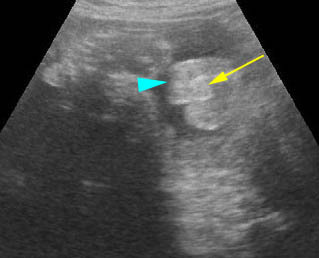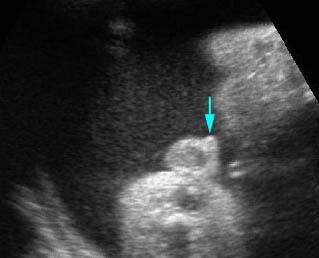Abnormal Genitalia
Ambiguous genitalia is the term used when on examination there is doubt as to whether the patient is phenotypically male or female. Ambiguous genitalia are made up of a heterogeneous group of disorders of various etiologies that are usually related to either an abnormal hormonal influence such as congenital adrenal hyperplasia or chromosomal defects such as trisomy 13 or trisomy 22.
Sonographic findings:
The types of abnormalities that lead to a suspicion of abnormal genitalia are short phallus, bent phallus, bifid scrotum, and apparently normal female genitalia in a fetus confirmed to be a karyotypic male, either by chorionic villous samplings or amniocentesis. If an XY karyotype is confirmed but a careful sonographic evaluation demonstrates normal-appearing female external genitalia, then the diagnosis of testicular feminization (XY chromosomes with female external genitalia) is assumed.
The short or bent penis seen in association with a normal-appearing scrotum is usually an indication of hypospadias with chordae.
When pseudohermaphroditism was detected in a male fetus by an experienced ultrasonographer at a tertiary center the prenatal diagnosis was accurate in 100% of cases. The prenatal diagnosis was less accurate (46% correct) in a female fetus.
Rarely, an examiner may perceive the genitalia as labia with a large clitoris or a bifid scrotum with a short penis. In such situations, a diagnosis of ambiguous genitalia may be made. However, the accurate diagnosis of ambiguous genitalia can be extremely difficult and should not place a diagnostic label on a fetus prenatally.

Ambiguous genitalia : Scan focus on the external genitalia: arrow = bifid scrotum or prominent labia majora, arrow = penis or enlarged clitoris

Abnormal genitalia : Focus on genital structures: male genitalia with microphalus (arrow)

